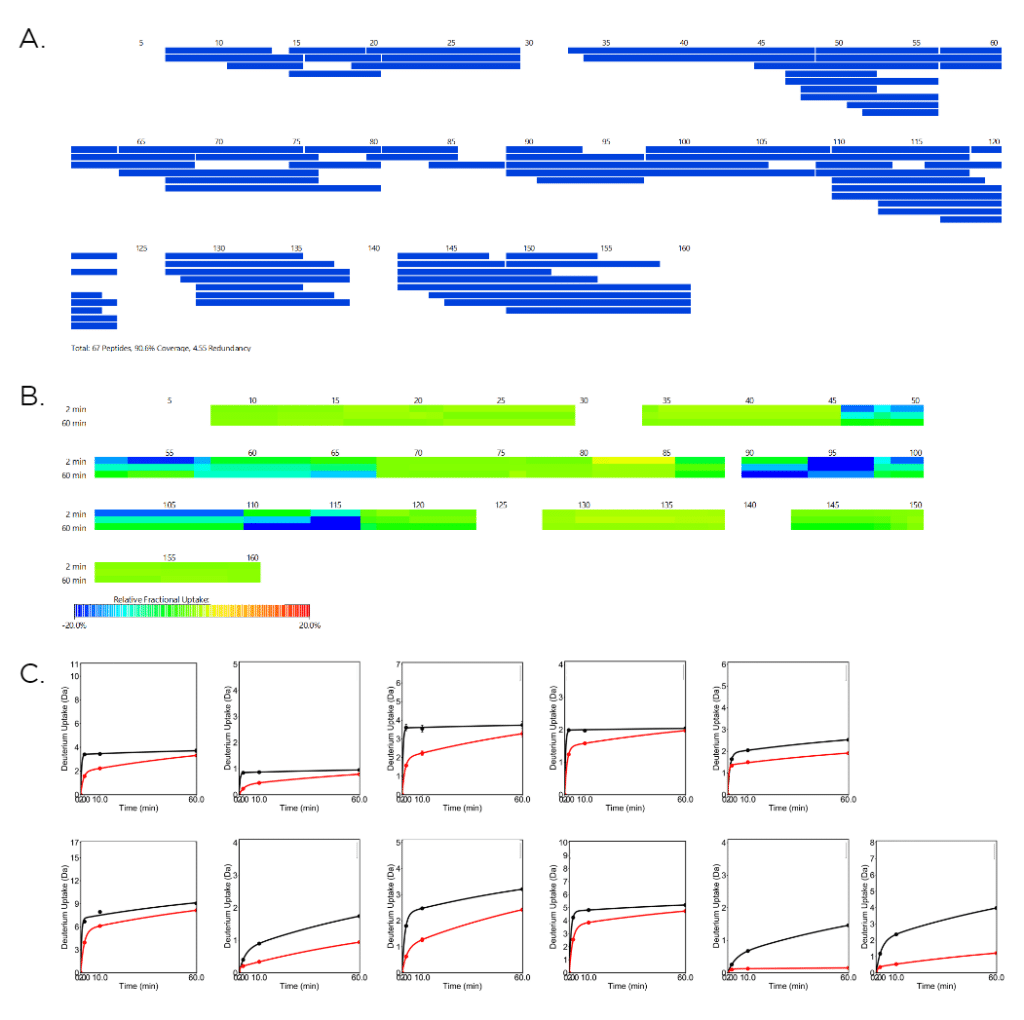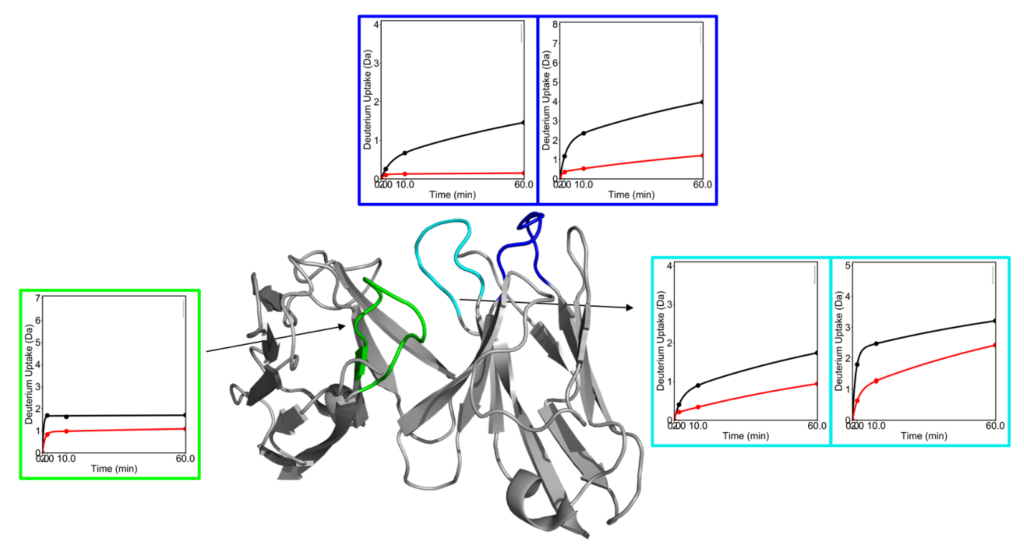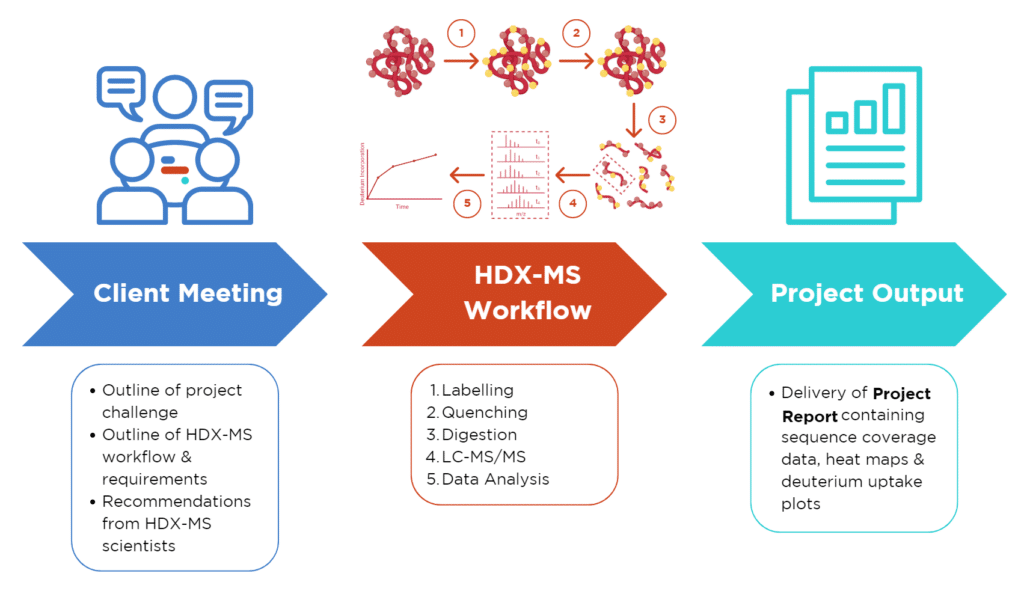Obtain protein binding site information to confidently move forward with downstream applications.
Background
- Our client is an early-stage biotechnology company based in the UK that focuses on biological targets for cancers and rare diseases.
- The target that they were focusing on at the time involved proteins that coordinate cellular DNA repair.
- Working with a 12-mer peptide and a 20-mer peptide of the target protein, they screened for binding against a related protein complex composed of two interacting proteins associated with cellular DNA repair.
Challenge
- The protein complex tagged with glutathione S-transferase (GST) binds to the 12-mer and 20-mer peptides; however, our clients encountered issues upon removal of the GST tag.
- The binding of the 12-mer peptide to the protein complex was no longer observed, potentially indicating a partial binding of the peptide to the GST tag. In contrast, the 20-mer peptide continued to display binding.
- Due to the confounding results, our clients were concerned that there were discrepancies in the expected binding site as suggested in previous literature.
Approach
- Our clients initially screened for a molecular interaction between the 12-mer peptide and the protein complex using a homogeneous time resolved fluorescence (HTRF) assay; however, their screen was unsuccessful.
- In conjunction, ongoing crystallography efforts were quite challenging due to the difficult nature of the target.
- Since the 20-mer peptide continued to display binding to the protein complex, our clients reached out to Rapid Novor and approached their challenge with our HDX-MS Epitope Mapping Service to characterize and confirm the expected binding site.
*For a detailed description of the theory and applications of HDX-MS, please refer to our reference materials on our website: What is HDX-MS Epitope Mapping? and Protein Characterization by HDX-MS.
HDX-MS Process
- We met with our clients to outline the project and the challenge itself, as well as discuss the HDX-MS workflow, experimental requirements, and deliverables (please refer to our services page for further details).
- Our in-house HDX-MS scientists provided the necessary recommendations for a successful project and addressed any concerns to ensure that the project needs were met.
- Once the project details were established, our logistics team ensured the safe arrival of the protein samples to initiate the HDX-MS workflow. Upon completion of the HDX-MS workflow, our clients received a Project Report outlining the data analysis and outcomes.
Outcome
- The comparison of deuterium uptake of the protein complex between its free and bound states confirmed that the binding site of the 20-mer peptide did in fact match the expected site based on previous literature.
- From the HDX-MS data, our clients were able to obtain confirmation of binding as well as detailed information about the binding site down to the specific amino acid residue. Additionally, our clients discovered a conformational change upon protein-protein interaction.
- The precise binding site information provided our clients the validation to proceed with the 20-mer peptide, knowing that they were targeting the right site. Having this knowledge on hand minimized the loss of time and cost of target R&D, allowing our clients to manage their timelines and budgets to continue with downstream assay development.

Figure 1. Deuterium uptake analysis of the protein complex in free state and bound state to the 20-mer peptide. A. Sequence coverage analysis.; B. Heat map of the protein complex in bound state. GREEN represents regions showing no change in deuterium uptake, CYAN represents regions showing slight decrease in deuterium uptake, BLUE represents regions showing strong decrease in deuterium uptake.; C. Deuterium uptake plots. Comparison of deuterium uptake between free and bound states over time.

Figure 2. Mapping of deuterium uptake onto the structure of the protein complex at the 60-minute timepoint.
Talk to Our Scientists.
We Have Sequenced 10,000+ Antibodies and We Are Eager to Help You.
Through next generation protein sequencing, Rapid Novor enables reliable discovery and development of novel reagents, diagnostics, and therapeutics. Thanks to our Next Generation Protein Sequencing and antibody discovery services, researchers have furthered thousands of projects, patented antibody therapeutics, and developed the first recombinant polyclonal antibody diagnostics.
Talk to Our Scientists.
We Have Sequenced 9000+ Antibodies and We Are Eager to Help You.
Through next generation protein sequencing, Rapid Novor enables timely and reliable discovery and development of novel reagents, diagnostics, and therapeutics. Thanks to our Next Generation Protein Sequencing and antibody discovery services, researchers have furthered thousands of projects, patented antibody therapeutics, and ran the first recombinant polyclonal antibody diagnostics


